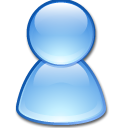Article,
Complementary and alternative medicine use in a large pediatric autism sample.
Pediatrics, 130 (Suppl 2): S77-82 (November 2012)NLM Journal Code: oxv, 0376422.
Abstract
BACKGROUND AND OBJECTIVE: Children and adolescents with autism spectrum disorder (ASD) often use complementary and alternative medicine (CAM), usually along with other medical care. This study aimed to determine associations of ASD diagnostic category, co-existing conditions, and use of medications with use of CAM. METHODS: We used the Autism Speaks Autism Treatment Network patient registry, which collects information on CAM use, medical conditions, and psychotropic medication at enrollment. CAM was categorized as special diets versus öther" CAM; ASD was defined as autism, pervasive developmental disorder (PDD), or Asperger’s. Gastrointestinal symptoms, seizure disorders, sleep problems, and medication use were determined from parent report. Child Behavior Checklist (CBCL) scores were used to measure behavioral symptoms. Logistic regression was used to determine associations of diagnostic category, other medical conditions, and medication use with CAM treatments, controlling for demographic characteristics. RESULTS: Of 3413 subjects in the registry as of April 2011, 3173 had complete data on CAM use: 896 (28\%) reported any use; 548 (17\%), special diets; and 643 (20\%), other CAM. Higher rates of CAM use were associated with gastrointestinal symptoms (odds ratio OR = 1.88), seizures (OR = 1.58), and CBCL total score >70 (OR = 1.29). Children with PDD (OR = 0.62), Asperger’s (OR = 0.66), or using medications (0.69) had lower rates. CONCLUSIONS: Children with ASD use more CAM when they have co-existing gastrointestinal symptoms, seizure disorders, and behavior problems. This study suggests the importance of asking about CAM use in children with ASD, especially those with complex symptoms.
Tags
- adolescent,
- aim,
- autistic
- child,
- complementary
- cross-sectional
- disorder/th
- female,
- humans,
- im,
- male,
- preschool
- studies,
- therapies,
- [therapy],
